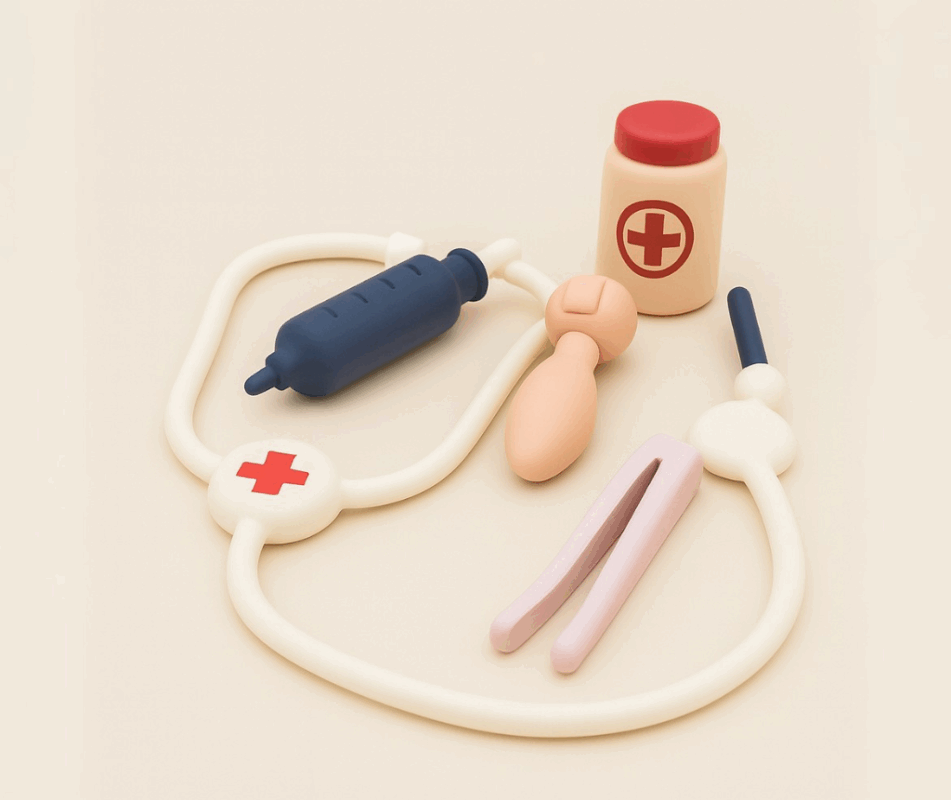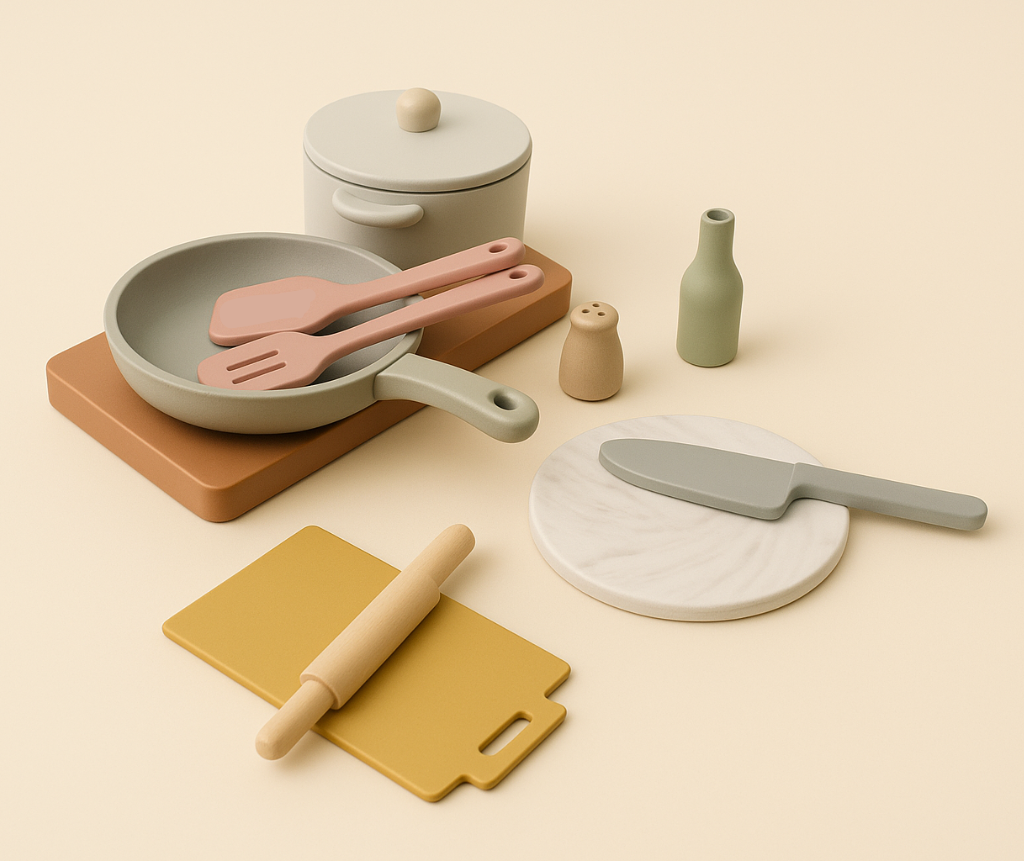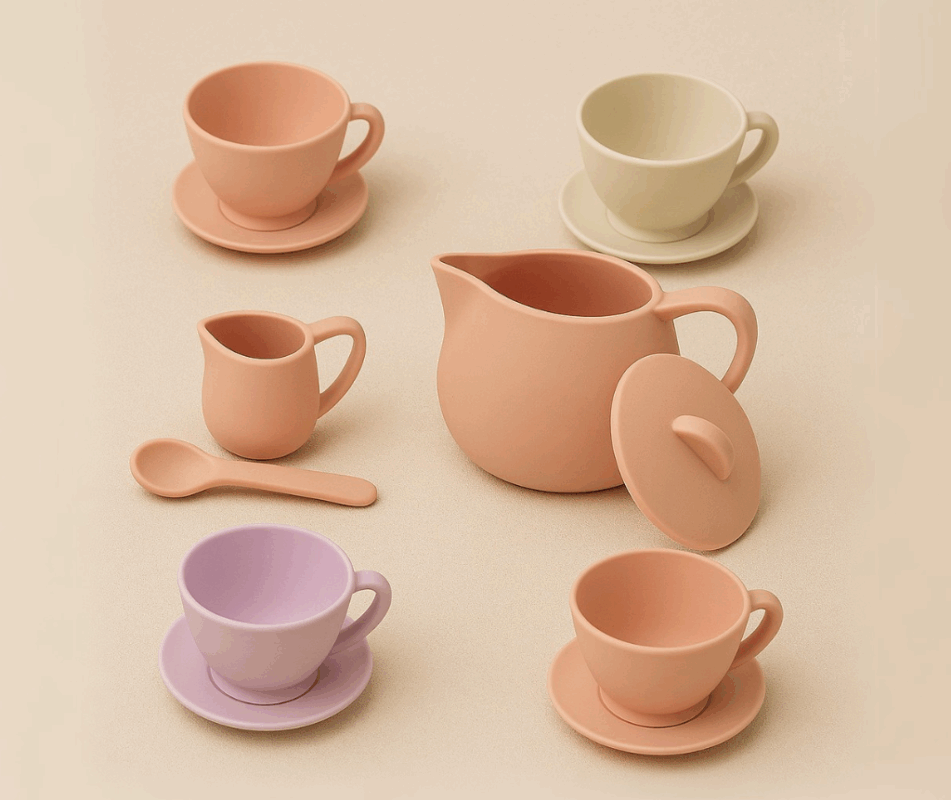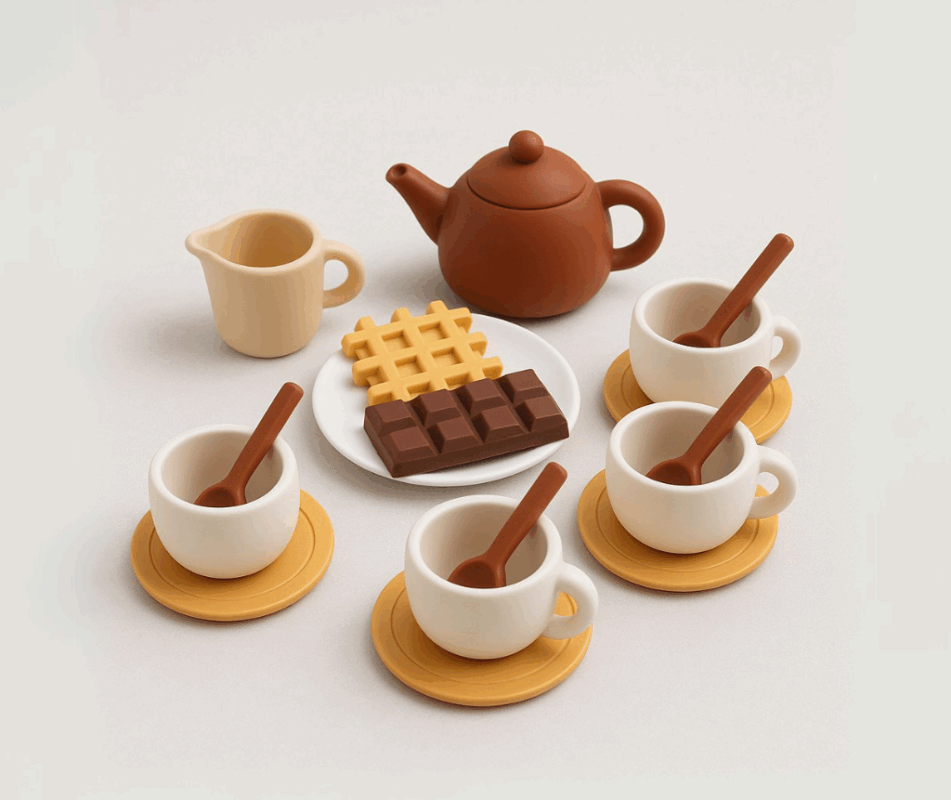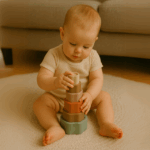- Home
- Knowledge Base
- Role-playing toys
- Silicone rolling toys: more expensive, but better?
Silicone rolling toys: more expensive, but better?
Role-playing toys have been a favourite among children and parents alike for years. While wooden and plastic variants dominated the market for years, a new material is increasingly popping up: silicone. Soft, safe, durable - but also a bit pricier. Is silicone rolling toys really better? In this article, we list all the facts, advantages and disadvantages.
What are silicone toys?
Silicone toys are made of food-grade silicone: a flexible, durable material originally developed for kitchen utensils and baby products (such as dummies and teething rings). It is now also found in role-playing toys such as:
Toy kitchen utensils (pans, plates, spatulas)
Doctor kit accessories (syringes, thermometers)
Baby care kits (bottles, nappies, creams)
Role-play pool toys (fishing games, animals)
Silicone rolling toys
Advantages of silicone roller toys
🌿 Safe & non-toxic
Silicone toys are usually BPA-free, contains no plasticisers and meets strict EU approvals such as CE and EN71 standards. It is safe for children to chew on or put in their mouths - which is inevitable with toddlers.
🧼 Hygienic and easy to clean
Silicone is non-porous and does not absorb moisture or bacteria. You clean it easily with soap and water - and the products can even go in the dishwasher. Ideal for nurseries or families with several children.
🤲 Soft and flexible
Unlike wood or hard plastic, silicone feels soft, bends with the child and has no sharp edges. Especially nice for younger children or for role-play that involves physical interaction (e.g. playing doctor).
🎨 Attractive design
Silicone lends itself perfectly to modern colours such as pastel, beige, sand, rust and sage green. As a result, it suits not only children's preferences, but also the aesthetics of young parents. Instagrammable toys, in other words.
🌈 Sensory experience
Silicone has a pleasant feel, makes hardly any noise and is slightly bendable. As a result, it stimulates sensory play, which contributes to the fine motor skills and sensory development of young children.
Disadvantages of silicone toys
💸 Relatively expensive
Silicone toys are often 20-40% more expensive than similar items made of plastic. The durability partly makes up for this, but it can be a barrier for price-conscious families.
🧩 More limited supply
Not every type of role-playing toy is available in silicone form. Especially fantasy themes (such as knights or construction sets) remain the domain of wood and plastic.
🧠 Less 'realistic' than wood
Some parents find wooden toys more aesthetic or 'real' looking than silicone. Silicone has a slightly softer, more abstract look.
Comparison with wood and plastic
| Feature | Silicone | Wood | Plastic |
|---|---|---|---|
| Safety | ⭐⭐⭐⭐⭐ | ⭐⭐⭐ | ⭐ |
| Sustainability | ⭐⭐⭐⭐⭐ | ⭐⭐⭐⭐⭐ | ⭐⭐ |
| Sensory | ⭐⭐⭐⭐⭐ | ⭐⭐⭐ | ⭐ |
| Maintenance | ⭐⭐⭐⭐⭐ | ⭐⭐ | ⭐⭐ |
| Price | ⭐⭐ | ⭐⭐⭐⭐ | ⭐⭐⭐⭐⭐ |
When are silicone toys a good choice?
Silicone role-play toys are ideal for:
Toddlers and preschoolers (1-5 years): safe, soft, clean and sensory-appealing
Parents who value sustainability and design
Children who are sensitive to stimuli (sensory play)
In doubt between wood and silicone? A hybrid approach also works fine: for example, use a wooden play kitchenette with silicone pans and accessories.
Finally, are silicone toys worth the investment?
Yes, in many cases it does. Silicone rolling toys are:
safe and durable
easy to maintain
attractive and versatile
and it often stays beautiful for years
The higher price pays off in ease of use, safety and playing power. Especially if you have several children or value durability.
 Puzzles
Puzzles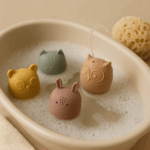 Water toys
Water toys Role-playing toys
Role-playing toys Sand toys
Sand toys